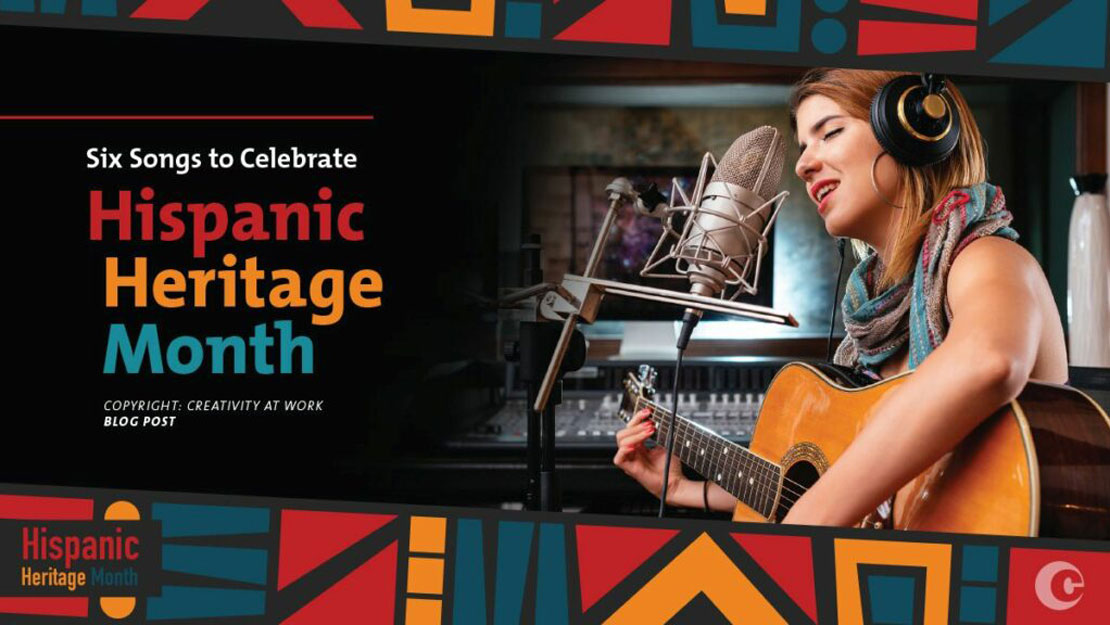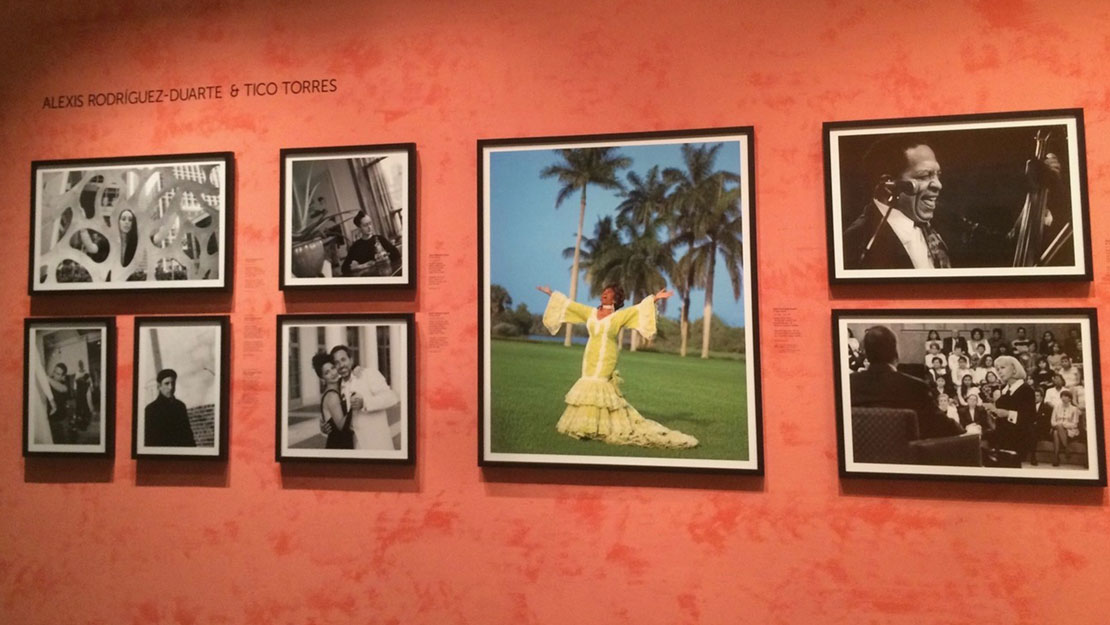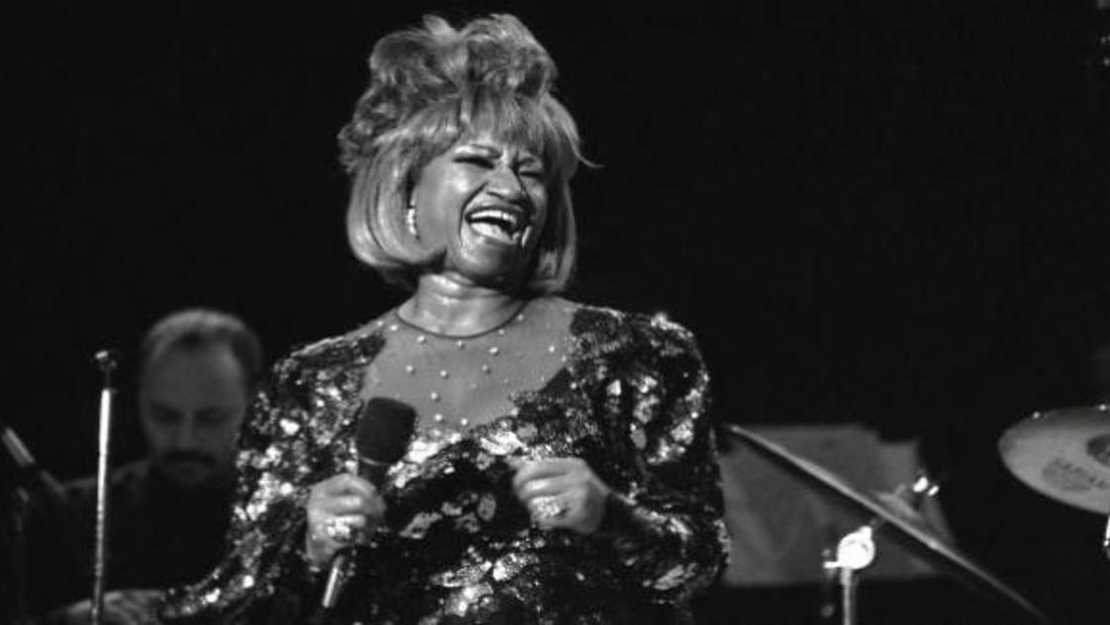By Nicole Lamberson / Library of Congress – October 7, 2021
This time every year, we observe National Hispanic Heritage Month, a celebration of the cultures, achievements, and contributions of Hispanic and Latin Americans in the United States. The Copyright Office’s records comprise millions of registrations and recorded documents from Hispanic and Latin Americans, many featuring works that share their cultures and traditions and enrich the nation.
This is especially true for musical works and sound recordings. Musical styles can tell you a lot about a culture because they develop from its history, society, traditions, and religions, as well as from the music of surrounding cultures. For example, Hispanic and Latin American musical styles share many cultural influences, such as those from indigenous groups like the Maya, Aztecs, and Inca; from European and Arab traditions of Spain and Portugal; and from the people of African nations, who were enslaved and brought to the Americas. These are just some of the influences that have created the vibrant and rhythmic Hispanic and Latin American music we know today.
Last year, we highlighted six Hispanic and Latin American authors you should know. This year, we’re sharing a few recognizable songs steeped in Hispanic musical culture.
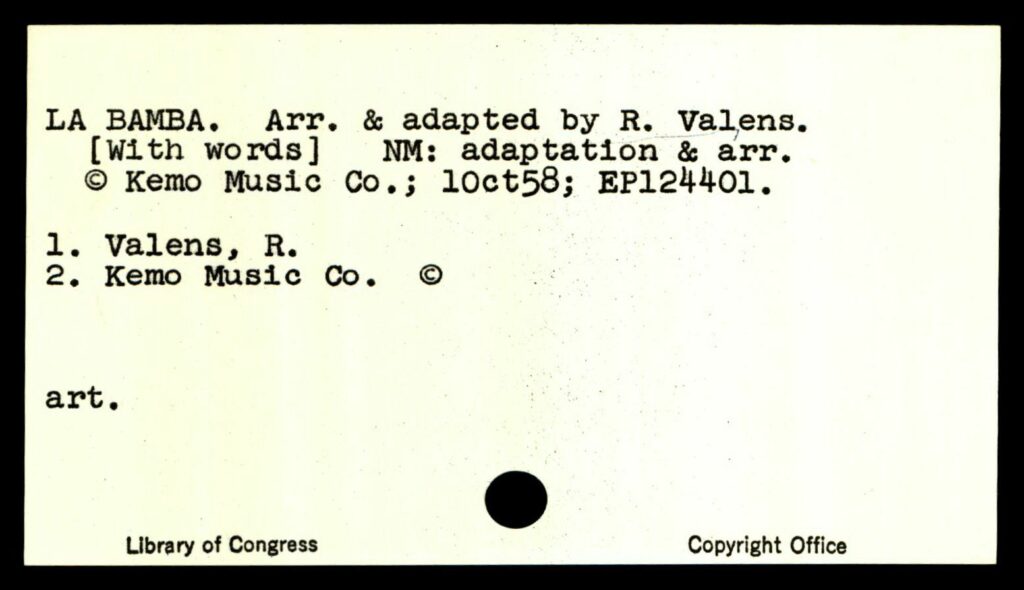
La Bamba (1958)
Written and performed by Ritchie Valens
One of the first Hispanic Americans to bring Latin music to the forefront of American popular culture was Ritchie Valens (born Richard Steven Valenzuela). In 1958, at just seventeen years old, the Mexican American singer-songwriter took a traditional Afro-Mexican folk song from Veracruz and added his rock-and-roll flare to create the classic hit, “La Bamba.” Valens’s version, sung entirely in Spanish, ushered in a new style of music in the United States and became a hit record.
Tragically, Valens died less than a year later in a plane crash, but his legacy as a pioneer of the Chicano rock genre lives on. He was inducted into the Rock and Roll Hall of Fame in 2001, and “La Bamba” was inducted into the Grammy Hall of Fame and the Latin Grammy Hall of Fame. Further, the song is often credited as influential in shaping rock and roll, and in 2018, the Library of Congress selected it for preservation in the National Recording Registry for being “culturally, historically, or aesthetically significant.”
Quimbara (1974)
Written by Junior Cepeda
Performed by Celia Cruz and Johnny Pacheco
Afro-Cuban American artist Celia Cruz and Dominican American musician, composer, and producer Johnny Pacheco met on the New York salsa scene and collaborated throughout their careers. In 1974, they recorded the album Celia & Johnny and the hit salsa song “Quimbara.” The song is a Cuban rumba, a genre of music based on African music and dance. The high-energy song’s style is recognizable in its prominent use of percussion and brass instruments.
Composed by Puerto Rican Junior Cepeda, “Quimbara” became Cruz’s “signature hit” and cemented her place as the “Queen of Salsa.” She received numerous honors, including a posthumous Congressional Gold Medal and induction into the International Latin Music Hall of Fame in 1999, and she influenced countless artists. Pacheco, who died earlier this year, was recognized throughout his career for his contributions to Latin music and was inducted into the International Latin Music Hall of Fame in 1998. In 2014, the Library of Congress selected Celia & Johnny for preservation in the National Recording Registry.

Conga (1985)
Written by Enrique E. Garcia
Performed by Gloria Estefan and Miami Sound Machine
One song that found inspiration in “Quimbara” is Gloria Estefan and Miami Sound Machine’s 1985 hit “Conga.” The Cuban American group’s drummer and lead songwriter, Enrique E. Garcia, wrote the song, which became a crossover success that brought salsa and Latin music to mainstream radio in the United States and around the world. With prominent percussion instruments and a big band sound, “Conga” danced all the way to number ten on the Billboard Hot 100 charts shortly after its release.
The song was a breakout hit for Miami Sound Machine and launched Estefan’s prolific career, which has included music, movies, books, a Broadway musical, and a multitude of honors. She was the first Cuban American to receive the Kennedy Center Honors award in 2017. In 2019, the Library of Congress named Estefan and her husband, Emilio, as the first Hispanic recipients of the Library of Congress Gershwin Prize for Popular Song, which “recognizes a living musical artist’s lifetime achievement in promoting the genre of song as a vehicle of entertainment, information, inspiration, and cultural understanding.”
Como La Flor (1992)
Written by A.B. Quintanilla III and Pete Astudillo
Performed by Selena y Los Dinos
As mentioned, Latin American musical styles can develop from the cultural influences around them. Take Tejano music, for example. Also known as Tex-Mex music, Tejano is a fusion of many Mexican and U.S. musical styles, such as folk, R&B, country, mariachi, and Mexican cumbia. One Mexican American artist who brought this style to the forefront of popular music in the United States was Selena, the “Queen of Tejano.” Her signature song was “Como La Flor,” which she performed with her band, Selena y Los Dinos.
Written by her bandmates A.B. Quintanilla III (also her older brother) and Pete Astudillo, “Como La Flor” became a breakout hit in the United States and Mexico and peaked at number six on Billboard’s Hot Latin Tracks. Selena’s life was tragically cut short when she was murdered in 1995, but her legacy lives on, and “Como la Flor” continues to inspire fans and artists around the world.
Learn more about Selena in our recent blog post, “The Inspiring Life and Work of Selena Quintanilla-Pérez.”
Livin’ La Vida Loca (1999)
Written by Draco Rosa and Desmond Child
Performed by Ricky Martin
The embodiment of Latin pop, “Livin’ La Vida Loca” is one of the best-selling singles of all time, and it catapulted Puerto Rican Ricky Martin into the global spotlight, earning him the nickname “King of Latin Pop.” Like some of the other Latin hits on this list, the song infuses percussion and brass instruments into a catchy dance beat you cannot ignore.
Written by Puerto Rican Draco Rosa and Cuban American Desmond Child, “Livin’ La Vida Loca” topped the Billboard Hot 100 chart on its release in 1999 and reached number one in more than twenty countries. In 2019, Billboard named it the thirteenth greatest song of 1999, and in 2020, Elle named it the best pop song of the 1990s. The upbeat, high-energy number also led the Latin music wave of the 2000s, which included hits from Jennifer Lopez, Marc Anthony, Enrique Iglesias, Shakira, and more.
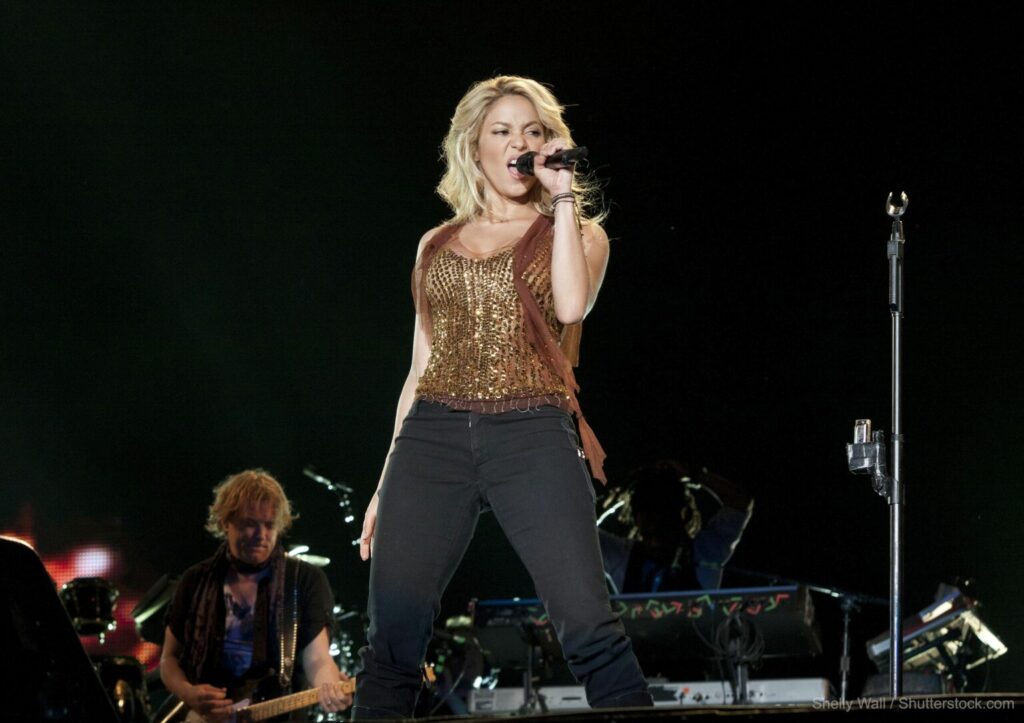
Whenever, Wherever (2001)
Written by Shakira, Tim Mitchell, and Gloria Estefan
Performed by Shakira
Colombian singer-songwriter Shakira exploded onto the U.S. music scene in 2001 with her hit “Whenever, Wherever,” but she didn’t stray far from her roots when writing the catchy number with Tim Mitchell and Gloria Estefan. The song is a mix of Latin pop and worldbeat, infused with Andean music—a group of musical styles from the Andes region in South America, known for using instruments like the charango, quena flute, and panpipes. Shakira also released a Spanish-language version of the song called “Suerte.”
“Whenever, Wherever” propelled Shakira to worldwide success, reaching number one on the charts in nearly thirty countries, and as of 2020, Billboard ranked it as one of the fifty best Latin songs of all time. Shakira, regarded as the “Queen of Latin Music,” is also one of the best-selling and most influential Latin artists of all time.
BONUS: Almost Like Praying (2017)
Written by Lin-Manuel Miranda
Performed by Artists for Puerto Rico
After Hurricane Maria struck the island of Puerto Rico in September 2017, Puerto Rican actor, singer, songwriter, producer, and playwright Lin-Manuel Miranda wrote the song “Almost Like Praying” and recruited more than twenty artists under the name Artists for Puerto Rico to record it. Proceeds from the song benefitted the Hispanic Federation’s UNIDOS Fund for Puerto Rico. The song comprises the names of all the towns in Puerto Rico and incorporates elements of the song “Maria” from the Broadway musical West Side Story. With the familiar percussion, upbeat rhythms, and the fusion of Latin pop and Puerto Rico’s own reggaeton, the song is a celebration of the small Caribbean island.
Most of the artists performing are Puerto Rican, including Jennifer Lopez, Mark Anthony, Rita Moreno, Anthony Ramos, Fat Joe, PJ Sin Suela, Tommy Torres, Pedro Capó, Luis Fonsi, and more. Other Hispanic Americans also perform on the record. Among them are Cuban Americans Gloria Estefan and Camila Cabello, Panamanian Rubén Blades, Cuban and Salvadoran American Ana Villafañe, Dominican Juan Luis Guerra, and Colombian American John Leguizamo.
—
These are only a sampling of the amazing songs and the Hispanic American creators who have shared their musical heritage and left an indelible mark on the nation. What songs will you be celebrating with this Hispanic Heritage Month?
